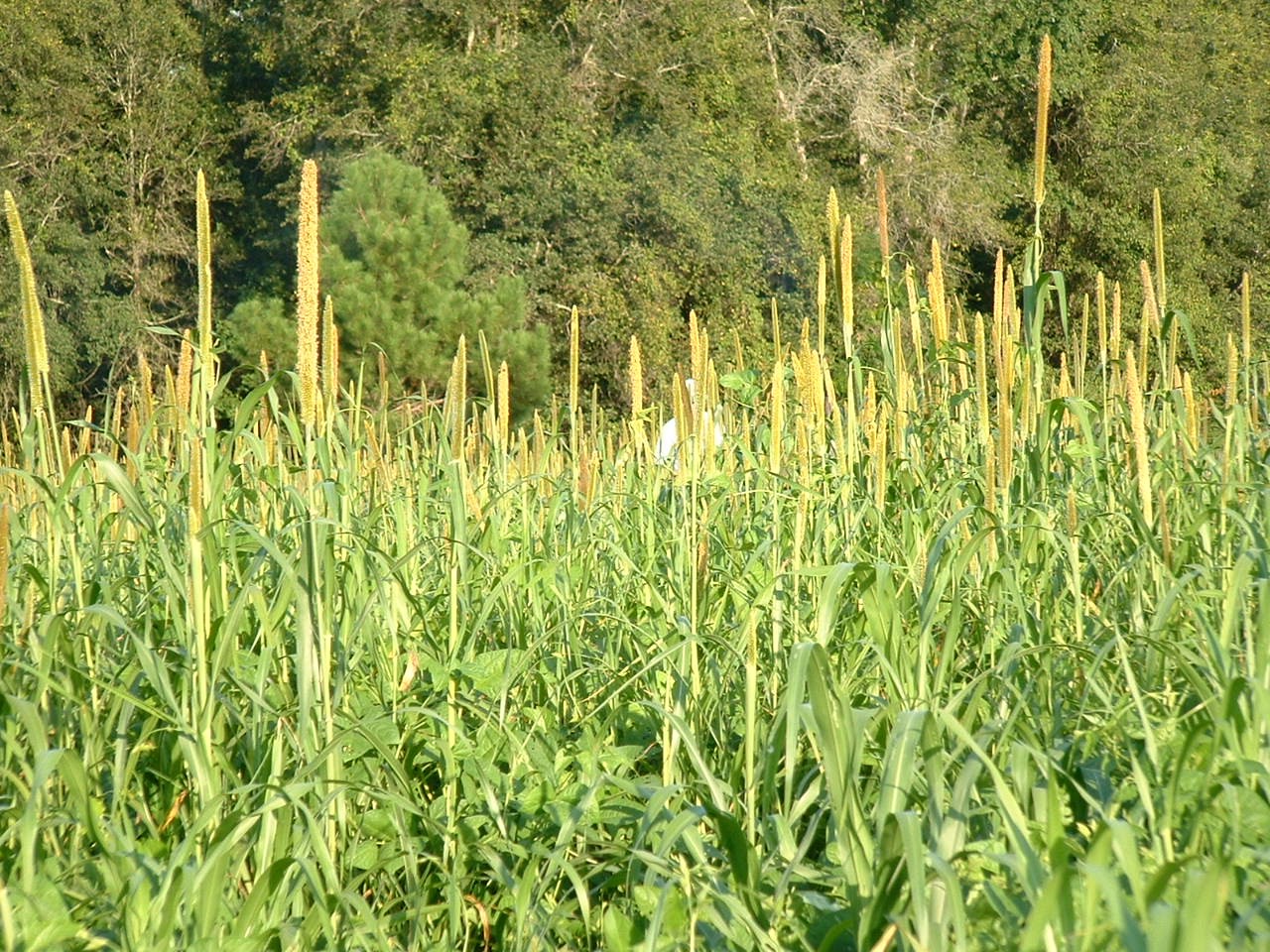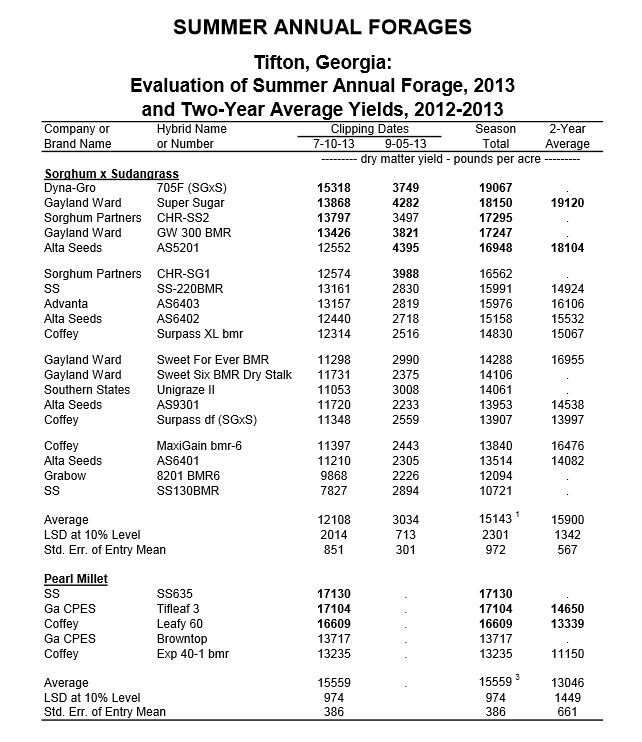
Summer Annual Forages: Millet, Forage Sorghum, Sudangrass, Sorghum-Sudan and Crabgrass
This has been a tough winter season for forage production. Many producers are struggling with little hay left in the barn and slow winter growth of our forages. Ranchers in the Panhandle had difficulty putting up dry hay during last summer and fall, and rain hurt timely planting of winter forages this fall. The result: very expensive feed bills this winter for many of our livestock enterprises. Even today, when night time temperatures fall below 50°F, it is hard for winter forages to grow well, even if properly fertilized. As we move into March, the warmer nights and increase in daylength should allow winter forages to provide a break from feeding livestock hay and supplements.
While the north Florida livestock industry relies on bahiagrass and bermudagrass for summer pastures, there is much to be said for considering planting some acreage this spring in summer annuals. These high quality and high yielding forages can provide excellent gains for livestock, such as stockers and replacement heifers, and first-calf heifers.
Pearl millet, crabgrass, forage sorghum, sudangrass and sorghum-sudan hybrids are annual, warm-season, seeded grasses that grow quickly in the spring and summer months and offer high-yielding and high-quality forage. These forages require either cultivated land, may be planted in strips, or no-tilled planted into winter forage that has been grazed down. Row crop and vegetable crop producers may also use millet, forage sorghum, or sorghum-sudangrass in rotation with high valued crops to maintain weed control and/or to prevent erosion, while providing their livestock with quality forage. Sometimes these forages are used when renovating pastures, particularly when trying to eliminate existing stands of perennial grasses. They can successfully shade out bahiagrass and bermudagrass.
While these quick growing annuals offer high nutritive quality, they can present a few management concerns. Nitrate accumulation can occur in all of these grasses. Extended periods of dry weather and crop management may contribute to the rapid accumulation of nitrates in the plant tissue. This generally occurs during periods of low rainfall or low humidity with plants heavily fertilized with nitrogen. Nitrate levels may be elevated when hay is cut during or just following a period of drought. Nitrate toxicity can be easily tested, so when in doubt have it tested before making hay. Prussic acid (HCN) poisoning is not a concern in millet, however, it is with forage sorghum, sudangrass, and sorghum-sudangrass and care should be taken with livestock consuming these forages during periods of drought or frost.
Summer annuals may be used for creep grazing, green chop, haylage, silage or hay. The large stems are often hard to dry for making hay, and a hay conditioner would best be used to hasten the drying period. Often these types of summer forages are ensiled rather than harvested for hay. [notice]Equine should not be fed sorghum-sudangrass because of health issues related to cystitis. Regardless of the class of livestock you are feeding, care needs to be taken to prevent any issues with nitrate and prussic acid concentrations in sensitive animals.[/notice]
Summer annual seed is often readily available and there are some very good varieties on the market. More information on planting and management of these crops can be found in: Producing Millets and Sorghums SS-AGR-89
Pearl millet should not be confused with Japanese millet, browntop millet, or proso millet. These are short growing millets, popular in wildlife plantings or for quick cover to prevent soil erosion. Forage yields of these millets are considerably lower than that of pearl millet and are not usually recommended for livestock forage plantings.
Some of the forage sorghums and sorghum-sudangrass hybrids now have the brown midrib (BMR) trait, which enhances the digestibility of the forage by as much as 40%. Sudangrass is a finer grass than sorghum-sudangrass and generally its forage is lower yielding.
Crabgrass is a fine-stemmed grass that can be grazed or cut for hay. In the Panhandle, it often volunteers in fields that have recently been tilled. Crabgrass can be planted, however, but commercial varieties are limited to “Red River” and “Quick and Big” crabgrass. Crabgrass mixes very well with legumes and other types of summer grasses. It is very palatable and has excellent forage quality with CP at about 14% and % IVDMD in the upper 70s (78-79%) when grazed or cut for hay in the vegetative stage. As the plant matures, as with most grasses, its forage quality declines.
Planting crabgrass fits well in open land situations where planting annual winter forages, such as ryegrass, oats, rye or wheat, for early grazing is the goal. The periods for winter annuals and crabgrass are complementary and allow for slight overlap in seasonal forage production. Shallow tillage prior to planting winter annuals incorporates crabgrass seed and usually results in good crabgrass stands the following spring, without the need for spring tillage. When the crabgrass stand is established, fertilization is the primary management practice required. Crabgrass growth in Florida declines by late August or early September. More information about crabgrass can be found in EDIS: Crabgrass as a Forage and Hay Crop
The season for summer plantings of annual grass forages is almost here. We can hope for timely rains and better growing conditions than this past year’s. Perhaps these summer annual forages might find a fit and help extend the forage calendar on your livestock operation.

Sidedress: 130 lb N/acre, plus 75 lb N/acre after 1st harvest
 0
0
